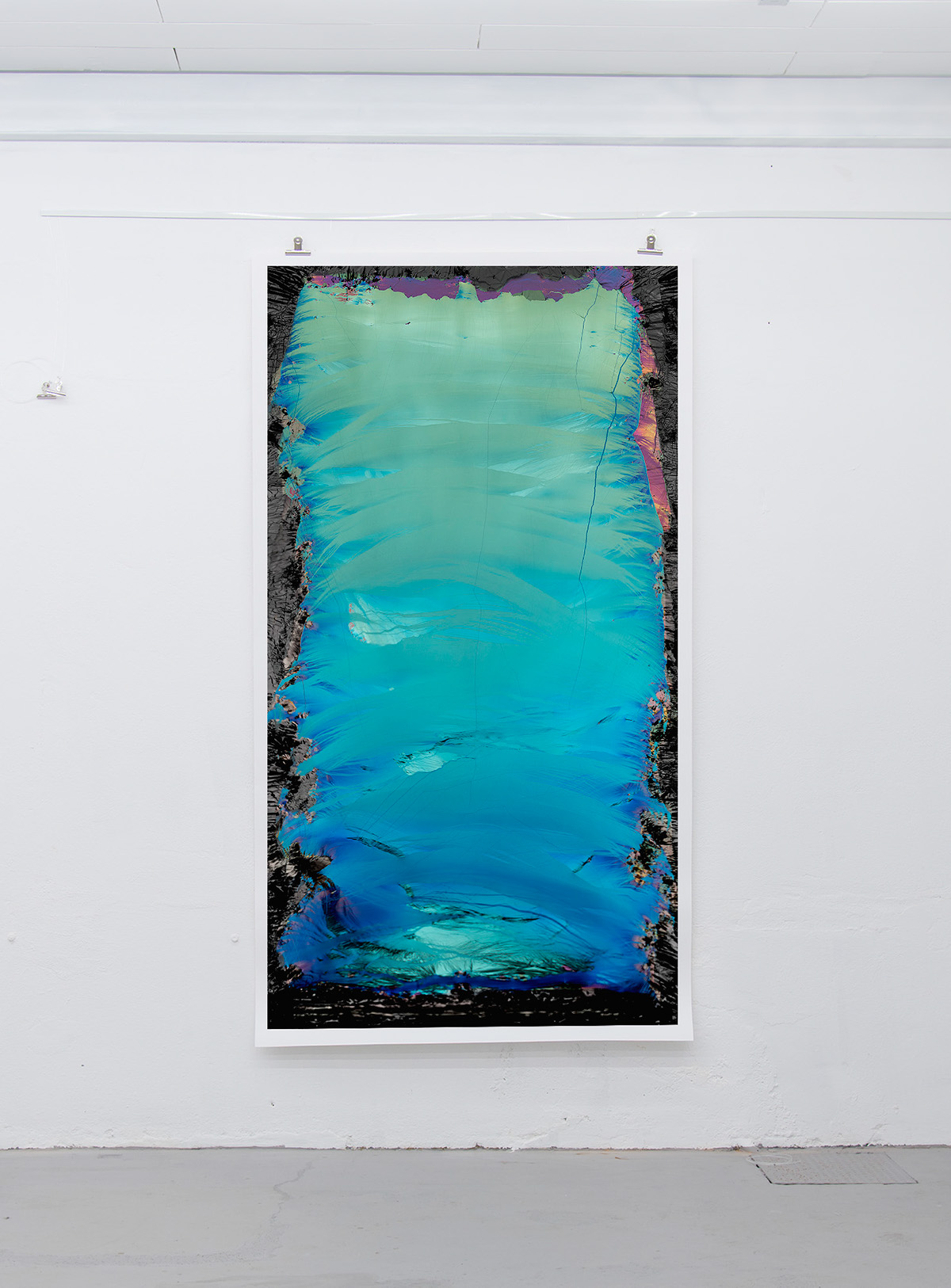Fabian Oefner`s new work, “Photographic Paintings”“ moves within the realms of painting and photography. As in previous works like “Disintegrating“ or “Paint in Motion“ the artist explores the possibilities and limits of photography.
When looking at the prints from a distance, one could define the works as paintings. The compositions distantly resemble Mark Rothko’s nebulous rectangles or Clifford Still’s large, monochromatic fields of color. Delicate gradients seem to have been painted effortlessly across the canvas with subtle brush stroke structures being added into the expanses of paint. However, when looking at the work up-close, one discovers various clues, that define it as photograph: Certain structures appear unsharp, indicating the technical origin of the piece. Furthermore, the texture of the paint has a characteristic graininess, as it is common in very large prints. And there is a faint smell of baryta coming from the print, a chemical used in high quality photographic papers.
The final work as well as the process of creation merges the characteristics of the two media. The material, that is used to create the colors and structures, is bismuth, a lead-like element. Several pounds of this metal are molten in a big pan. With a spatula, Oefner removes the top layer of the liquid material. The exposed metal immediately reacts with the air, resulting in the creation of different colored gradients. Since the artist only has limited control with the spatula and the occurring colors depend greatly on the current temperature of the metal, the final composition is very much defined by chance. The process liberates Oefner from the need of a conscious search for color and composition – a well-known approach in abstract painting.
The second part of the process is dominated by the characteristics of photography. As soon as the top layer is removed and the metal is exposed to the air, it constantly changes its appearance in colors and shapes. By capturing the process with a camera, Oefner records compositions, which only exist for a few seconds. Contrary to the work with the spatula, the artist defines this part of the creation very consciously, pushing the release button only when a coherent composition appears.
The photographs are then minimally edited on the computer, correcting only dust particles and similar image defects The subsequent printing of the files moves the work again from a photographic, digitally abstract piece into a tangible, pictorial experience.
With the “Photographic Paintings“ series, Oefner has reversed the deeply rooted process of painting from a photograph and created photographs, that seem to originate from painting.


A chunk of bismuth before melting.

Melting the Bismuth in the Pan. You can see that the top layer has already been removed to reveal the liquid metal.



Detail from Photographic Painting No. 02


Detail from Photographic Painting No. 03






Detail from Photographic Painting No. 01

